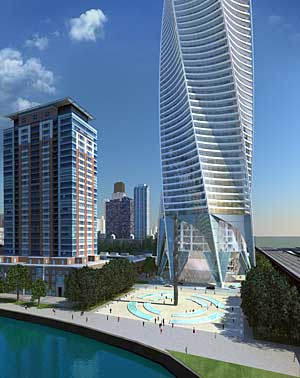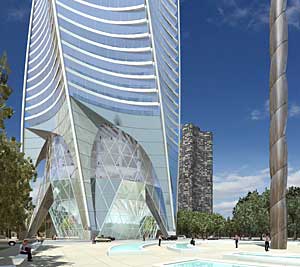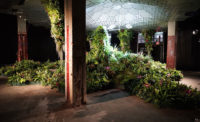

Calatrava, in his love of nature themes, has likened his slender spire to a wisp of smoke, a tree trunk, and a snail shell. A spire of light shines upward from the point and illuminates the night sky, extending the proportions even further. Each of its 150 floors rotates two degrees from the orientation of the floor below it, decreasing in width as the tower ascends. This spiraling form helps dissipate heavy wind downdrafts common in Chicago and other cities with tall buildings. The entire structure perches on seven, W-shaped columns that guard a 56-foot-tall glass atrium like a prized crystalline egg.
Remarkable as the building is, the process of gaining public, governmental, and financial support proved difficult. Garrett Kelleher, founder of Shelbourne Development, purchased the site last summer for $64 million after Fordham Enterprises, the tower’s original developer, failed to secure financing. To produce a program that was more financially feasible, Shelbourne requested a series of design revisions that tripled the number of condos but fattened and flattened the tower’s form—prompting the city and neighborhood groups to reject this design in December 2006.
The current scheme reflects Calatrava’s effort to return to the original program of a delicately tapered form while maintaining a profitable number of residences. Kelleher is providing the initial funding without the help of financiers or pre-sales—leading many observers in Chicago to wonder if he’ll be able to finish the project, whose price tag could soar to $2 billion. A Shelbourne spokesperson says that Kelleher is confident that construction will begin immediately and finish in 2010.




Post a comment to this article
Report Abusive Comment